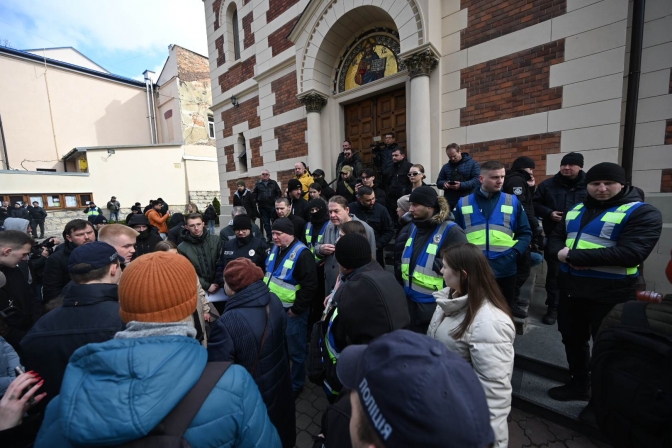
This is how Lviv was getting rid of the Russian church
[For daily insights from throughout Ukraine, follow Ukrainian Freedom News on Telegram]
In this article, we describe how the events unfolded in Lviv’s main Russian Orthodox Church cathedral and in the church on Antonovycha Street. We explored who is heading the Russian church in the Lviv region, why he did not support the community and whether he had any connection with Russia at all.
This day in history, or How it was happening
Remember this day. On the morning of April 5, parishioners with the regional authorities and the police are gathering in the church on Tarasa Bobanycha Street. Everything starts peacefully. Those present initiate the transition of the community to the Ukrainian church. The authorities welcome this initiative and report that from now, it belongs to the Orthodox Church of Ukraine (OCU) becoming a garrison (military) temple of Saint George [who in Orthodox tradition is called «Yuriy Peremozhets» or «Yuriy who overcame the Dragon»]. The street itself was recently renamed in honour of Taras Bobanych, a soldier and Lviv native who died in the current war with Russia. The Warrior’s House is located nearby. Therefore, a new nucleus should appear in the centre of Lviv as a reminder of Ukraine’s resistance against the Russian invaders.
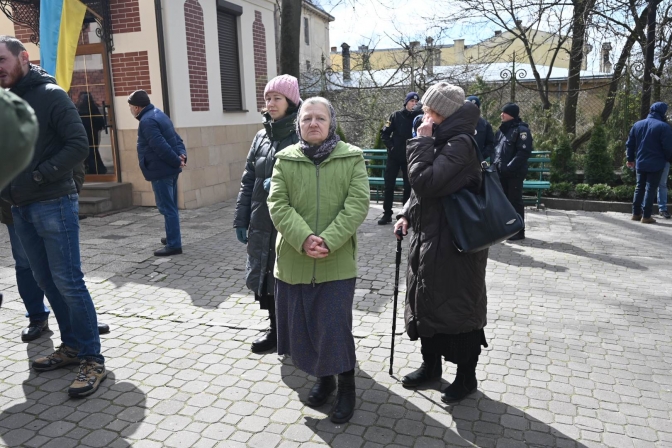
Before 12:00, people approach the temple, including a group of young men. They call themselves parishioners of the Russian Church and say they were not asked for consent. Metropolitan Filaret of the Ukrainian Orthodox Church of the Moscow Patriarchate [the name by which Russian Orthodox in Ukraine names itself] enters the yard, talks about love and refuses to join the OCU. The quarrels and scuffles take place near the building, but the police are watching and controlling the situation.
Read also: Is it possible and necessary to ban Moscow Patriarchate in Ukraine?
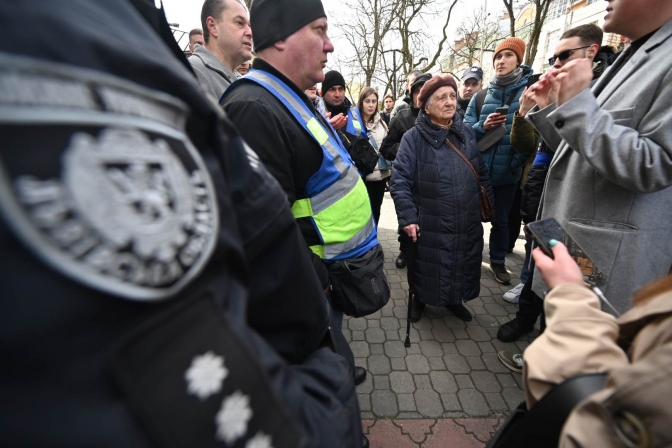
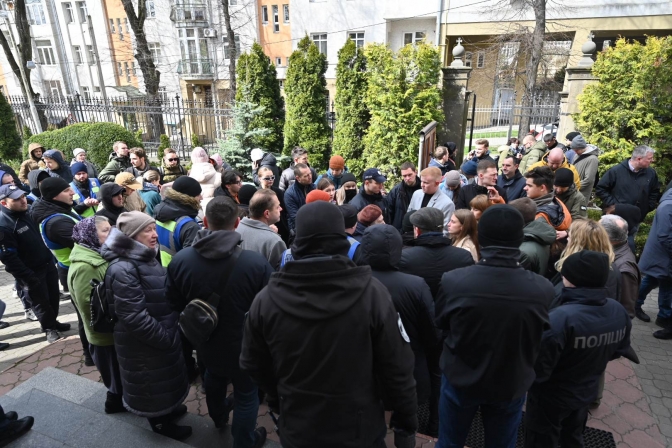
Who heads the Russian church in Lviv, or Who is Filaret
During its entire existence, the Ukrainian Orthodox Church of Moscow Patriarchate (UOC MP) had four leaders. From 2013 to the present day, it has been built by the Metropolitan of Lviv and Galicia Filaret Kucherov.
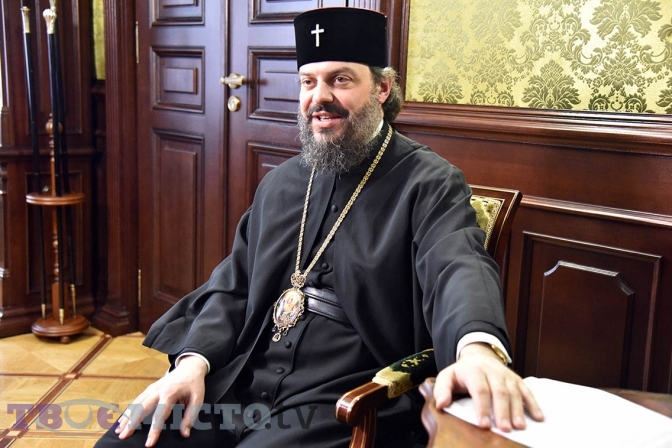
At first, he studied at a medical school, the Moscow Theological Seminary and the Kyiv Theological Academy. Kucherov’s priestly career began in Moscow. There he was a subdeacon (attendant) to the Moscow Patriarch Alexy II, who headed the Russian Orthodox Church before Kirill. It is quite difficult to get into such an environment – a person must be recommended either in the seminary or by priests close to the bishop.
Later, Filaret stayed in the Kyiv-Pechersk Lavra, where he curated the construction of the two-level church of Sergius of Radonezh and Alexander Nevsky, financed by the sponsors. These two are especially revered saints in the Russian Orthodox Church, highlighted as purely «Russian». Their names appeared most often in the communication of Great Russian narratives in the sermons of the Ukrainian Orthodox Church of Moscow Patriarchate and the Russian Orthodox Church.
Read also: What happened to the Moscow church in Ukraine. Interview with the Metropolitan
On April 5, 2023, when the congregation of the church on Tarasa Bobanycha Street decided to transfer to the Orthodox Church of Ukraine (OCU), Filaret said he did not support such a decision.
We will remind you that by February 24, 2022, about 30 parishes of the Moscow Patriarchy in the Lviv region have transferred to the newly created OCU. As the priests told, Filaret criticized such decisions and exerted pressure: more than ten priests who switched from the UOC (MP) to the OCU received a ban on serving from him. This is one of the tough measures in the religious sphere.
Currently, there are officially 48 parishes of the Russian Church left in the Lviv region, several of them in Lviv, in particular the arbitrarily erected building on Sykhiv and the church on Antonovycha Street.
Sources close to our editorial office claimed that even before the full-scale invasion, the Russian church in Lviv was trying to influence the Ukrainian military. In Lviv’s National Academy of Land Forces named after Hetman Petro Sahaidachnyi, they reported that the MP took care of almost 70% of the chapels on the territory of the military units and supported the transfer of the academy from Lviv to Odesa.
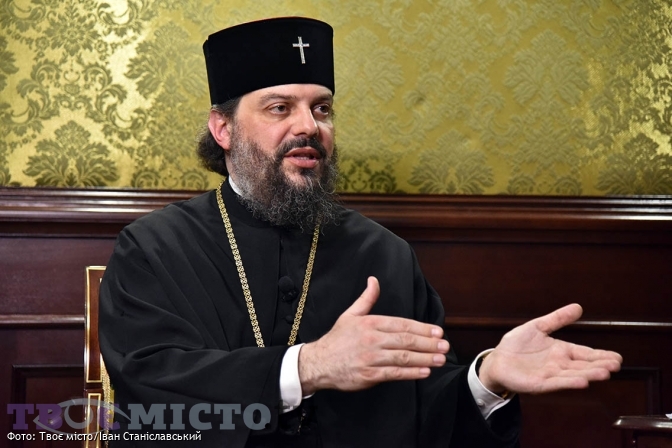
In addition, Filaret supported the former Consul General of the Russian Federation in Lviv, Yevhen Guzeev, who stated that the Ukrainian language was brought to Lviv by the Bolsheviks in the 1940s and that the «Ukraine» project was created by Austria to separate Ukraine from Russia.
What’s next?
Taras Hrynchyshyn, a former adviser on religious issues of the Lviv Regional State Administration, explains that the community can decide its own fate, according to state legislation. For this purpose, parish meetings or meetings of a religious community are convened, where a certain number of votes can make a certain decision, which happened today. And if we talk about the required number of votes, then it’s worth understanding there’s not always a calculation of the exact number of people – members of the church community. For example, among Greek Catholics, parish members are those who live on its territory, but the territory of Lviv is sometimes divided into several squares. The Roman Catholics are divided by streets. And the Orthodox, who belong to the Russian Orthodox Church, formerly called the Ukrainian Orthodox Church of Moscow Patriarchate, had three communities in Lviv: on the Tarasa Bobanycha (former Korolenka) Street, Antonovycha Street, and in the Sykhiv district.
By the way, another significant event took place yesterday. The owner of the premises on Antonovycha Street, used by the local religious community of the Russian Church, decided to terminate the agreement on rent. There used to be a Russian Orthodox Church of the Holy Trinity.
As for the temple in Sykhiv, the mayor of Lviv said on April 4 that it’s an illegal self-build that will probably be demolished.
Why did the cathedral of the Moscow Patriarchy move to the OCU
According to Taras Hrynchyshyn, if the community were to convert to the Greek Catholic, Roman Catholic or Protestant churches, it would be a change of religion. Instead, all Orthodox fathers of the same faith can voluntarily serve at one altar.
The community will draw up meeting minutes, which must comply with the current charter. The charter of the temple on the street Tarasa Bobanycha was adopted in 1991 [changes were made to it in 2007]: how many people voted, what was the quota of votes, who made the decision and participated. That is, there should be a protocol in which the community notes the decision to move to another jurisdiction and elects its leader.
«With the protocol and the new charter, the community should apply to the Regional State [now military administration, to the Department of Religions and Nationalities. At the same time, the head of the administration should issue an order that he approves and registers the charter in the new version. Therefore, this information enters the Unified State Register of Legal Entities. Only then does this decision become legally binding – the community becomes a full member of the OCU,» – Taras Hrynchyshyn explains.
A bit of history
The temple on Tarasa Bobanycha Street was built in the Byzantine-Romanesque style in 1897-1901 for the Orthodox who lived in Galicia as part of the Austro-Hungarian Empire. In the interwar period, the temple belonged to the Polish Orthodox Church for some time, then it was transferred to the Moscow Patriarchate.
According to the order of the head of the Lviv regional military administration Maksym Kozytskyi, the organization «Religious community of the UOC of St. Great Martyr George in Lviv» acquired the status of «Orthodox Church of Ukraine, parish of Great Martyr Yuriy Peremozhets».
By the way, this name is quite symbolic: St. George (Yuriy) is known for having pierced the mouth of the dragon sprawled under him with a spear, which represents the symbolic struggle between Good and Evil. As the Ukrainian religious song sings, «Saint Yuri and the Most Holy Mother will help us to conquer evil!»
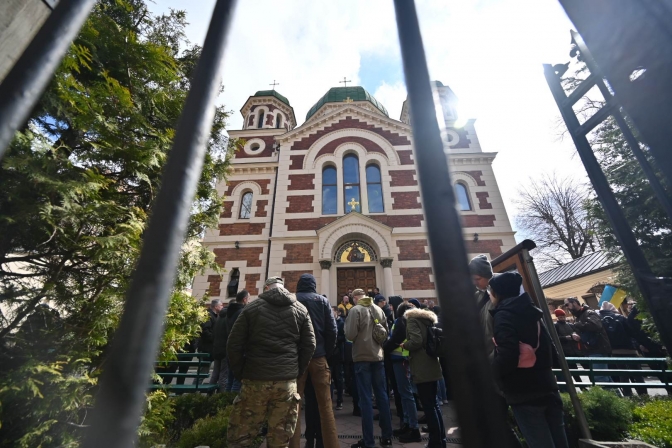
P.S. Of course, there may be those in Lviv who do not understand why events are unfolding as they are. However, they should ask themselves whether an enemy church can exist in Ukraine, a church of a country that attacked and killed civilians...
Antonina Kostyk, translated by Vitalii Holich
Photo: Ivan Stanislavskyi/Tvoye misto
Full or partial republication of the text without the written consent of the editors is prohibited and considered a violation of copyright.
Follow us on Facebook and Instagram. Lviv Now is an English-language website for Lviv, Ukraine’s «tech-friendly cultural hub.» It is produced by Tvoe Misto («Your City») media-hub, which also hosts regular problem-solving public forums to benefit the city and its people.


